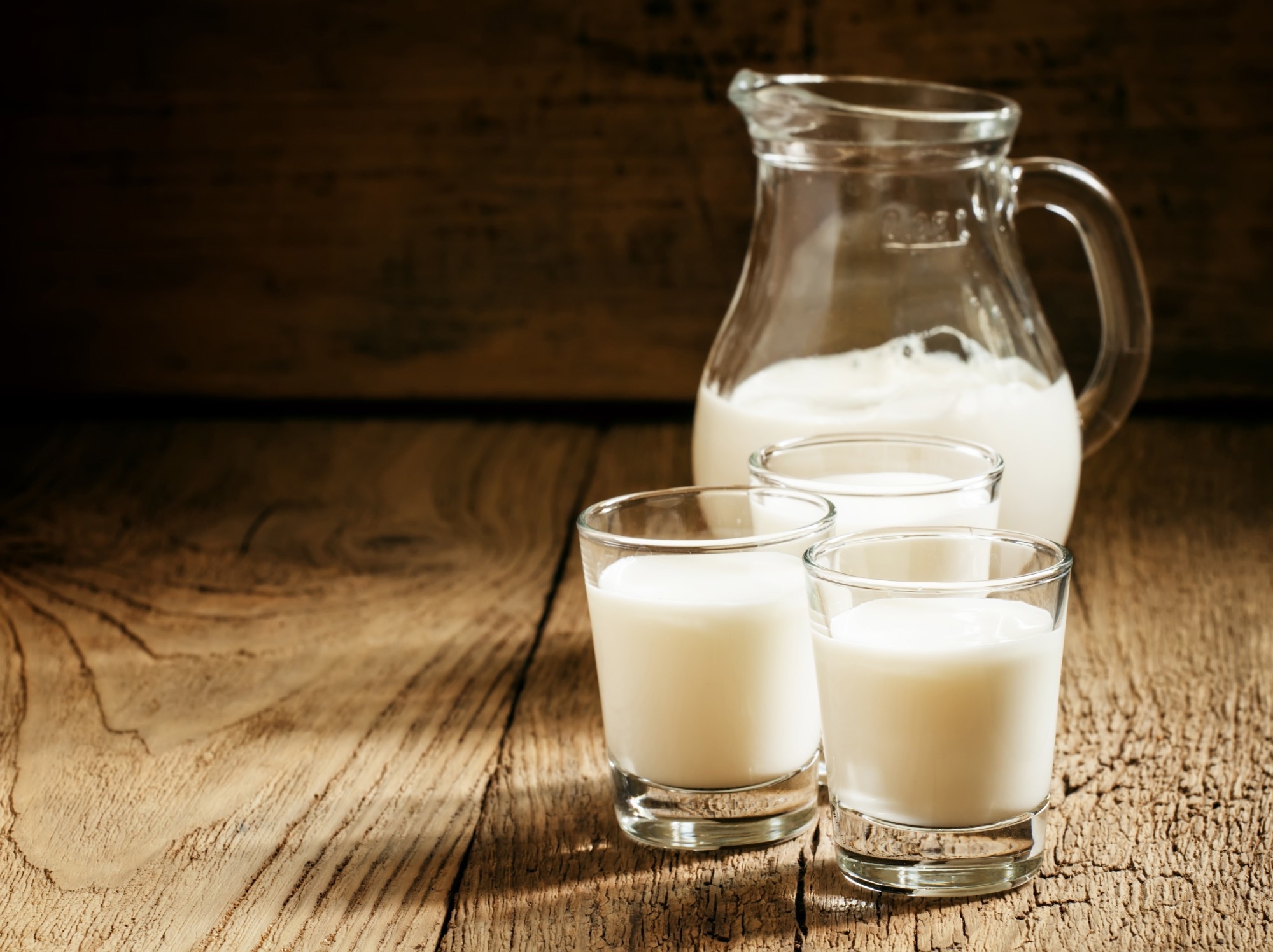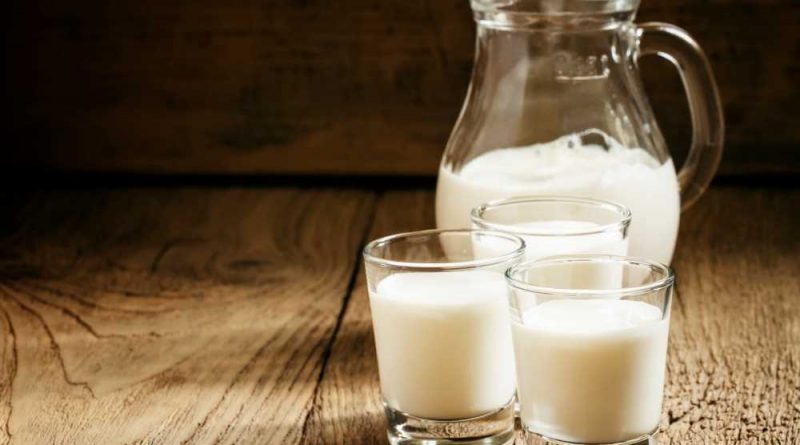Sheep milk could be an inexpensive source of therapeutic polyclonal SARS-CoV-2 neutralizing antibodies
In a recent study posted to the bioRxiv* preprint server, researchers used sheep, a ruminant mammal, to obtain polyclonal immunoglobulins (IgGs) against severe acute respiratory syndrome coronavirus 2 (SARS-CoV-2).

Drug Discovery eBook

They demonstrated that sheep vaccinated with SARS-CoV-2 receptor-binding domain (RBD) fused to ovine IgG2a fragment crystallizable (Fc) domain secrete antigen-specific polyclonal neutralizing antibodies (nAbs) in their serum, colostrum, or milk. Further, they showed that using fusion immunogens could help maintain high and sustained neutralizing titers in sheep serum or colostrum for a prolonged period.
Background
New highly mutated SARS-CoV-2 variants of concern (VOCs) are continuously arising; thus, there is an urgent need for polyclonal (or cocktails) of therapeutic monoclonal antibodies (mAbs) that could provide broader coverage against VOCs that evade immunity. Commercially-relevant ruminant animals could be an inexpensive source of vast amounts of polyclonal SARS-CoV-2 nAbs, secreted in serum or milk. These hyperimmune fractions could later be processed for therapeutic use directly or formulated as a food supplement.
Recently, Kangro et al. immunized expectant cows with the SARS-CoV-2 RBD and used the antibodies in their colostrum for nasal application, which protected against infection for nearly four hours in a small-scale clinical study. These antibodies closely resembled pathogen-specific nAbs induced by vaccination in humans. However, it remains challenging to induce high nAb titers in ruminant colostrum.
One possible way could be using immunostimulant technology, and the other could be focusing on antigens in the RBD, which constitute only 17% of full-length spike (S) protein. Likewise, antigens containing RBD fused with immune-stimulating proteins could amplify nAb titers following vaccination. In non-ruminant species, the IgG Fc domain triggers robust SARS-CoV-2 neutralizing responses following vaccination. Similarly, cytokines, such as granulocyte-macrophage colony-stimulating factor (GM-CSF), could help enhance anti-SARS-CoV-2 immunity.
About the study
In the present study, researchers used the Global Initiative on Sharing Avian Influenza Data (GISAID) database to download 14,429 S protein sequences to obtain a consensus sequence mapped to the Wuhan-Hu1 SARS-CoV-2 sequence. Likewise, they used the international ImMunoGeneTics (IMGT) database to retrieve ovine IgG2 Fc complementary DNA (cDNA) sequences.
Next, the team synthesized antigen plasmid constructs to design three recombinant antigens, S IgG2 Fc, RBD IgG2 Fc, and RBD GM-CSF, from which they purified proteins using an automated liquid chromatography system. Sodium dodecyl-sulfate polyacrylamide gel electrophoresis (SDS-PAGE) confirmed all antigens were over 80% pure.
Next, the researchers developed eight trial groups comprising seven hoggets, each 12-month-old and weighing 52 kilograms. They administered 1.4 ml antigen doses thrice on days zero, 21, and 42 over the 16-week trial duration at shaved sites on their hind leg. Each test group received different antigen masses but an equivalent number of SARS-CoV-2 neutralizing epitopes. They evaluated the serum response to each antigen in the first trial phase using enzyme-linked immunosorbent assay (ELISA). They collected their blood samples on days zero, nine, 21, 42, 63, 84, and 112.
Finally, the team vaccinated expecting sheep a fourth time nearly three weeks before lambing and collected colostrum and blood samples immediately once they lambed. They also collected samples on days four, 16, and 32 to assess the anti-SARS-CoV-2 activity of their sera and colostrum.
Study findings
The study results showed that the vaccination of sheep with fusion immunogens promoted substantially higher levels of antigen-specific polyclonal nAbs compared to full-length S and native RBD antigens. In vitro assessments showed that these antibodies had higher levels of nAbs that inhibit binding between the RBD and human angiotensin-converting enzyme 2 (hACE2) receptors. ELISA screening revealed that the RBD IgG2a Fc antigen design increased anti-RBD titer by 3.1-fold compared to RBD alone, with peak antibody responses observed at week nine. These nAb responses persisted until week 16, but titers declined by ~40% from the peak titers.
The animals in the GM-CSF cohorts showed highly heterogeneous nAb response(s) to vaccination. So, although the RBD GM-CSF antigen-elicited high neutralizing titers in specific animals, neither did it elicit nAb titers above the RBD control, suggesting weaker immunostimulation, nor the nAb response attained statistical significance at the cohort level. Animals vaccinated with adjuvant or ovalbumin (controls) showed no anti-RBD nAb response.
Overall, the antibody response generated in sheep colostrum was cross-reactive and neutralized several SARS-CoV-2 variants, including Delta VOC, albeit had slightly reduced efficacy against Omicron. Intriguingly, all these anti-SARS-CoV-2 nAbs were generated in maternal serum and then transferred via colostrum.
Conclusions
According to the authors, this is the first study to show ways to incorporate IgG elements into viral antigens to make fusion immunogens to augment the immune response in small ruminant mammals, such as sheep. The researchers did not test the neutralization potency of sheep colostrum-derived polyclonal antibody formulations against live viruses. Thus, future studies should further characterize the colostral anti-SARS-CoV-2 antibody response and investigate the pharmacokinetics of the injected fusion antigens in sheep or ovine colostrum; for instance, mass spectrometry could detect the presence of RBD peptide(s) in colostrum.
Nevertheless, this novel method to obtain recombinant antigens in ruminant animals appears scalable and could have many applications in immune milk production and developing vaccines against ruminant pathogens.
*Important notice
bioRxiv publishes preliminary scientific reports that are not peer-reviewed and, therefore, should not be regarded as conclusive, guide clinical practice/health-related behavior, or treated as established information.
- Gregory Jacobson, Kirsty Kraakman, Olivia Wallace, Jolyn Pan, Adele Williamson, Alex Hennebry, Grant Smolenski, Ray Cursons, Steve Hodgkinson, William Kelton. (2022). Immunogenic fusion proteins induce neutralizing SARS-CoV-2 antibodies in the serum and milk of sheep. bioRxiv. doi: https://doi.org/10.1101/2022.12.11.519990 https://www.biorxiv.org/content/10.1101/2022.12.11.519990v1
Posted in: Medical Science News | Medical Research News | Disease/Infection News
Tags: Angiotensin, Angiotensin-Converting Enzyme 2, Antibodies, Antibody, Antigen, Assay, Avian Influenza, Blood, Chromatography, Colostrum, Coronavirus, Coronavirus Disease COVID-19, Cytokines, DNA, Efficacy, Electrophoresis, ELISA, Enzyme, Food, Gel Electrophoresis, Immune Response, immunity, in vitro, Influenza, Liquid Chromatography, Macrophage, Mass Spectrometry, Omicron, Pathogen, Pharmacokinetics, Plasmid, Polyclonal Antibody, Protein, Receptor, Respiratory, SARS, SARS-CoV-2, Severe Acute Respiratory, Severe Acute Respiratory Syndrome, Spectrometry, Syndrome

Written by
Neha Mathur
Neha is a digital marketing professional based in Gurugram, India. She has a Master’s degree from the University of Rajasthan with a specialization in Biotechnology in 2008. She has experience in pre-clinical research as part of her research project in The Department of Toxicology at the prestigious Central Drug Research Institute (CDRI), Lucknow, India. She also holds a certification in C++ programming.
Source: Read Full Article



